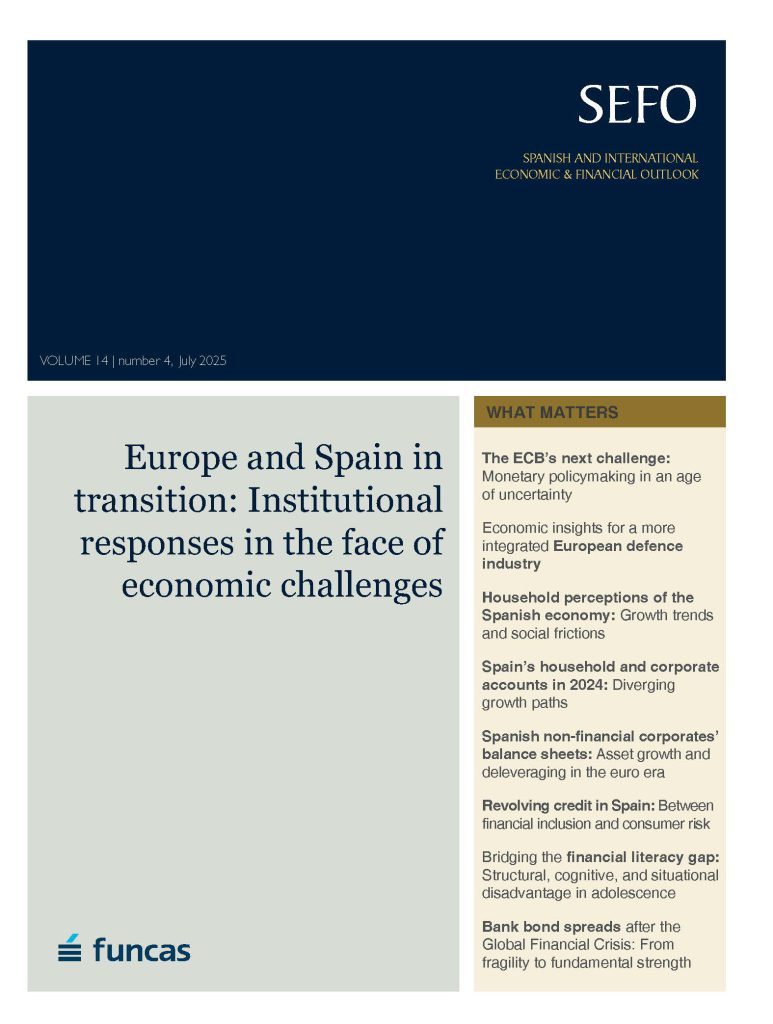Europe and Spain in transition: Institutional responses in the face of economic challenges
Fecha: julio 2025
SEFO, Spanish and International Economic & Financial Outlook, V. 14 N.º 4 (July 2025)
Index
With inflation falling and rates now below peak, the ECB has entered a new phase of policymaking focused less on neutrality and more on agility. In an increasingly volatile global environment, credibility and adaptability, rather than pre-set trajectories, will define the path forward.
Despite rising defence budgets across the EU, limited integration continues to constrain industrial efficiency and innovation. Coordinated production and collaborative investment could significantly enhance output without increasing overall spending.
Spain has recorded some of the eurozone’s strongest post-pandemic growth, with gains driven by tourism, immigration, and EU recovery funds. Yet, household perceptions remain mixed, shaped by inflation, tax pressures, and persistent inequality that undercut the broader economic narrative.
In 2024, Spain’s households continued to build financial strength through rising incomes, high savings, and manageable debt burdens. Meanwhile, non-financial corporations faced falling profitability and persistently weak investment, revealing a growing imbalance in the post-pandemic recovery.
Since entering the euro area, Spain’s non-financial corporations have doubled their real asset base while significantly reducing leverage, particularly bank debt. This structural shift from debt-financed expansion to self-funded investment reflects broader changes in corporate behavior amid evolving economic and financial conditions.
Revolving credit plays a growing but still limited role in Spain’s household borrowing landscape, offering flexible financing to consumers with limited access to conventional credit. However, its complex structure and high associated costs raise concerns around transparency, education, and regulatory oversight.
In recent years, adolescent financial literacy has gained prominence as a critical skill, yet large gaps persist across academic and socioeconomic cohorts, as well as across varying degrees of exposure to financial education. These disparities reflect deeper structural and educational inequalities, emphasizing the need for targeted interventions that equip all students for real-world financial decision-making.
Once seen as safer and cheaper than corporate debt thanks to its regulated profile and implicit government backing, since the 2008 financial crisis, bank-issued debt has carried a risk premium, driven by regulatory shifts, sovereign exposures, and profitability concerns. Recent improvements in capital generation, liquidity, and diversification suggest that the premium may no longer be justified on fundamental grounds.

